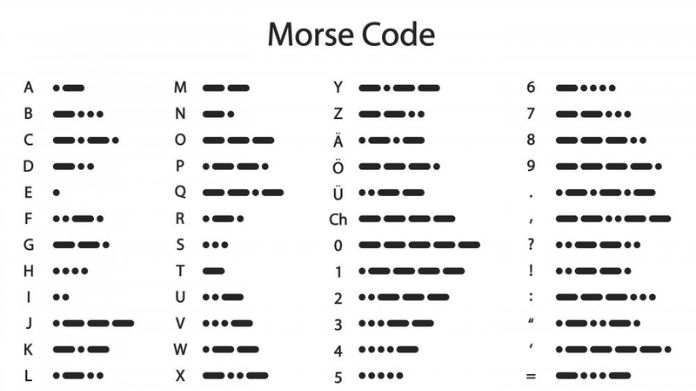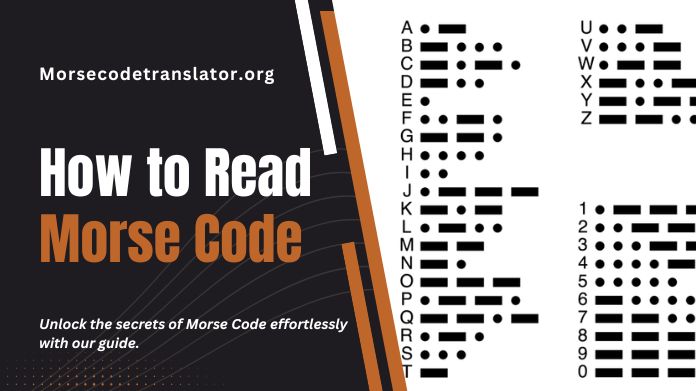With its dots and dashes, Morse code has a classic and enthralling charm. Created by Samuel Morse and Alfred Vail in the early 1800s, telegraphy was the primary means of long-distance communication.
Knowing how to read Morse code these days can be a valuable and enjoyable skill, regardless of your interest in amateur radio, history, or just trying something different.
We’ll walk you through the fundamentals of Morse code in this in-depth guide to Morse code translator, offer advice on how to read Morse Code, and address frequently asked questions concerning this intriguing communication method.
What is Morse Code?

Early 19th-century inventors Samuel Morse and Alfred Vail developed the Morse code system, which converts text characters into dots and dash sequences that indicate short and long signals.
Morse code was first used for long-distance telegraphy. Still, its versatility and ease of use make it an excellent choice for communication in various contexts, such as military operations and emergencies.
The purpose of this article is to give a brief introduction to the foundations, operating principles, and historical significance of Morse code. Comprehending Morse code requires knowledge of several essential guidelines.
The timing is crucial: dashes denote longer signals, usually three times longer than a dot, and dots indicate shorter ones. One dot equals an intercharacter space, three dots to an interletter gap, and one to an interword gap.
What is the Morse Code Alphabet?
First, let’s get acquainted with the Morse code alphabet. These are the 26 English alphabet letters represented in Morse code.
- A: .- N: -. 1: .—- (NUMBERS)
- B: -… O: — 2: ..—
- C: -.-. P: .–. 3: …–
- D: -.. Q: –.- 4: ….-
- E: . R: .-. 5: …..
- F: ..-. S: … 6: -….
- G: –. T: – 7: –…
- H: …. U: ..- 8: —..
- I: .. V: …- 9: —-.
- J: .— W: .– 0: —–
- K: -.- X: -..-
- L: .-.. Y: -.–
- M: — Z: –..
What Are the Basic Rules for Morse Code?
Timing: Accurate timing is essential to Morse code. A dash represents a more extended signal than a dot. Generally, a dash is three times longer than a dot.
Character Space: One dot equals the distance between a single dot and a dash within the same letter. Three dots represent the space between letters in a word, and seven dots represent the space between words.
Punctuation: Full stops (. ), commas (. ), and question marks (?) are among the common punctuation marks that have unique codes in Morse code.
Now that we’ve covered the fundamentals let’s move on to learning how to read Morse code more simply.
How to Read Morse Code – Easy Tips for Learning Morse Code

Although learning Morse code initially seems overwhelming, it can be made more manageable with practice and the appropriate methodology.
Here are some pointers to help you efficiently learn Morse code.
1. Morse Code Translators
Use apps or translators that translate text to Morse code when you input text. For practice and verification, this can be a helpful tool.
2. Start With the Basics
Start by learning the alphabet and numbers in Morse code. Your understanding of Morse codes will be based on your familiarity with these basic codes.
3. Learn Common Words
Find the English terms often used along with their corresponding Morse code. You’ll be able to read words and phrases faster as a result. For example, “-…..” represents “THE”.
4. Use Mnemonics
To help you remember Morse code characters, come up with associations or mnemonic devices. You may, for instance, connect the letter “A” to an apple for “.-” or the letter “S” to a snake for “…”
5. Practice Frequently
The secret to learning Morse code is consistent practice. To improve, use mobile apps, online resources, and practice software for Morse code.
6. Join a Community
Joining online forums or amateur radio clubs where enthusiasts for Morse code congregate should be considered. Engaging in conversation with like-minded individuals can be inspiring and educational.
7. Set Achievable Goals
Establish reasonable objectives for your learning of Morse code. To push yourself, progressively make the text you practice with more complex.
Frequently Asked Questions
Q. Why Should I Learn Morse Code Today?
Ans. In addition to having valuable applications in amateur radio and emergencies, learning Morse code can be fulfilling. It also provides you with access to a wealth of historical communication technology.
Q. How Fast Do I Need to Learn Morse Code?
Ans. Learning Morse code at your own pace is totally up to you. While some people pick things up quickly, others take their time. Decide on your speed.
Q. Can Morse Code Be Used for Texting and Modern Communication?
Ans. Yes, texting and other contemporary communication can be done using Morse code. Some apps and devices still support Morse code input, and it can be an enjoyable way to interact with other enthusiasts.
Q. What Resources Can I Use to Learn Morse Code?
Ans. Many books, courses, apps, and web resources are available to learn Morse code. Select the ones that most align with your learning goals and learning preferences.
Conclusion
Acquiring knowledge of Morse code is an enthralling experience that links you to an extensive communication legacy. Understanding the fundamentals, using our advice, and practicing frequently will help you on how to read Morse code easily and even use this age-old method for real-world communication.
Learning to read and write Morse code is a fulfilling endeavour with both practical and personal benefits, regardless of your motivation—learning to read and write Morse code is a unique skill you can explore.
Begin your journey to learn Morse code right now!
